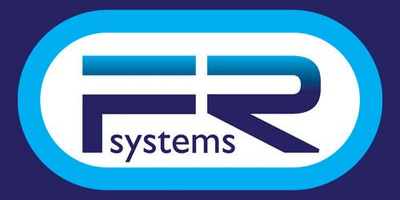Choosing the Right Hosting Provider
Selecting the right hosting provider is a foundational step in preventing server overload and maintaining optimal server performance. A reliable hosting provider should offer scalable solutions, robust load balancing, and integrated content delivery networks (CDNs) to help distribute traffic efficiently and reduce server load. When comparing hosting options, it’s important to assess their ability to handle sudden traffic spikes and their expertise in server management. The right provider will not only help you avoid server overload but also ensure your website remains responsive and reliable, even during unexpected surges in user demand.
Evaluating Hosting Options for Scalability
When considering hosting providers, prioritize those that offer scalable plans designed to accommodate fluctuating traffic patterns. Cloud hosting is particularly effective, as it allows you to scale resources up or down based on real-time needs. Look for providers that utilize multiple servers and advanced load balancers to distribute incoming traffic and prevent server crashes during periods of high traffic. Assess their server configuration options, including the ability to adjust memory allocation quickly, so your infrastructure can adapt seamlessly as your website grows. A provider with a flexible, modern infrastructure will help you stay ahead of potential performance bottlenecks.
Key Features to Look For
To effectively reduce server load and improve server response time, your hosting provider should offer a suite of advanced features. Load balancing is essential for distributing incoming requests evenly across servers, while CDNs help deliver content quickly to users around the globe, reducing the strain on your origin server. Evaluate the provider’s expertise in implementing caching mechanisms, such as browser cache and proper HTTP caching, which minimize the number of requests reaching your backend. Additionally, look for automatic scaling of compute resources—like CPU and memory—to ensure your site can handle sudden traffic spikes without manual intervention. These features collectively help maintain fast, reliable service and prevent server overload.
When to Upgrade Your Hosting Plan
Monitoring your website’s traffic patterns is key to knowing when it’s time to upgrade your hosting plan. If you’re experiencing consistently high traffic, slow server response times, or frequent server crashes, it’s a clear sign your current plan may not be sufficient. Upgrading to a more robust solution, such as a cloud provider that offers dynamic resources, can help you prevent server overload and maintain performance during peak periods. Providers like Google Cloud offer flexible scaling and advanced server management tools, making it easier to adapt to changing demands and ensure your infrastructure is always ready for growth.
Optimizing Server Performance
Optimizing server performance involves efficient resource management, caching strategies to enhance speed, and minimizing latency for a better user experience. Additionally, optimizing code is crucial to improve efficiency and prevent server overload. It is also important to optimize server capabilities to enhance overall functionality.
Efficient Resource Management
Efficient resource management ensures servers operate smoothly without waste. Start by monitoring resource usage to identify inefficiencies. Managing computing resources effectively is crucial for handling traffic loads efficiently and maintaining optimal server performance. Use tools to track CPU, memory, and bandwidth consumption.
Implement resource allocation strategies to ensure critical applications receive priority. Consider containerisation, which allows for efficient resource use by isolating applications in lightweight environments. This reduces the load on the main server and enhances performance.
Regularly update software and hardware to utilize the latest improvements and security patches. Keeping your systems current helps prevent unnecessary strain and maximizes efficiency. However, resizing resources without proper planning can result in unnecessary architectural complexity and higher costs.
Caching Strategies for Speed
Caching involves storing copies of files to speed up access time. By caching frequently accessed data, servers can reduce load and improve response times. Consider:
-
Browser Caching: Allows users’ browsers to store site files, speeding up repeated visits. It is important to cache static assets and set proper cache policies to maximize performance.
-
Server-side Caching: Utilizes a cache layer to store data close to the application, reducing retrieval time.
-
Content Delivery Networks (CDN): Distributes cached content across global servers for faster access.
Optimizing caching behavior by adjusting cache-control directives and HTTP cache headers such as Cache-Control, Expires, and ETag can further improve website performance, especially during server overload situations. Updating existing image urls to point to a CDN can also enhance site performance and reduce load times.
Implementing these strategies reduces server load, enhances speed, and improves overall user experience. Serving a static text page as a graceful degradation strategy can temporarily reduce system load during overload situations.
Minimizing Latency
Latency is the delay before data transfer begins following an instruction. Minimizing latency enhances performance significantly. Start by optimizing your network paths. Shorter paths mean faster data transfer.
Use compression techniques to reduce the size of files sent over the network. Smaller files mean less time in transit, reducing latency. Ensure your DNS settings are optimized, as efficient resolution can decrease load times.
Regularly test network performance to identify bottlenecks and implement solutions promptly. Keeping latency low ensures a swift and responsive user experience.
Securing Your Server Against Overload
Protecting your server from overload isn’t just about managing legitimate web traffic—it’s also about defending against malicious attacks that can cripple your infrastructure. Distributed Denial of Service (DDoS) attacks are a major threat, as they flood your server with illegitimate incoming requests, overwhelming your resources and causing server overload. Implementing strong security measures is essential to prevent downtime, data loss, and service disruptions.
DDoS Protection and Mitigation
To safeguard your server against DDoS attacks and prevent server overload, it’s important to implement a multi-layered defense strategy. Start by enabling rate limiting and IP blocking to filter out suspicious or excessive incoming requests. Choose a hosting provider that offers built-in DDoS protection and mitigation services, which can automatically detect and neutralize attacks before they impact server performance. Additionally, leverage a content delivery network (CDN) to distribute traffic and offload demand from your origin server, making it harder for attackers to target a single point of failure. By combining these strategies, you can maintain optimal server performance and ensure your website remains accessible, even during large-scale distributed denial attempts.
Emergency Response Strategies
When server overload strikes, having emergency response strategies in place can make all the difference. Identifying the affected server is a key step in emergency response, as it allows you to focus troubleshooting efforts where they are most needed. This section covers quick fixes, monitoring and alerts, and disaster recovery planning.
Quick Fixes for Immediate Relief
In the face of server overload, quick action can mitigate immediate impacts. First, temporarily disable non-critical features to reduce load. Serving a static text page can also temporarily reduce system load during overload, providing a simple and effective way to minimize business impact. This frees up resources for essential operations.
Redirect traffic to backup servers or utilize a content delivery network (CDN) to offload demand. Implement rate limiting, which controls the number of requests a user can make, to prevent further strain.
Finally, optimize existing processes by clearing cache and restarting the server to free up resources. These actions offer temporary relief, allowing time to address the root cause of the overload.
Monitoring and Alerts
Monitoring and alerts are crucial for preventing server overload. Implement real-time tracking tools and monitoring tools to monitor server performance indicators like CPU usage, memory capacity, and response times. Monitoring tools are essential for tracking server performance and detecting potential bottlenecks.
Set up alerts for any anomalies or performance drops using a monitoring tool, ensuring immediate notification of potential issues. Utilize dashboards to visualise data, facilitating quick analysis and decision-making.
Regularly review logs and reports to identify patterns and anticipate future overloads. Accurate data collection is vital for effective monitoring and analysis, enabling proactive management and reducing the risk of unexpected server stress.
Disaster Recovery Planning
A robust disaster recovery plan ensures business continuity despite server failures. Start by identifying critical systems and prioritising their recovery. Establish data backup protocols to protect against data loss.
Design a recovery strategy detailing roles, responsibilities, and procedures. Test the plan regularly to ensure its effectiveness and make adjustments as necessary.
Consider cloud-based disaster recovery solutions, offering flexibility and rapid deployment. Being prepared minimizes downtime and protects both reputation and revenue.
Long-term Traffic Management
Long-term traffic management focuses on consistently handling high traffic without compromising performance. Proper management of your server's resources is crucial for sustained performance, as it helps prevent overloads and service disruption. This involves implementing traffic shaping, conducting regular performance audits, and future-proofing your infrastructure.
Implementing Traffic Shaping
Traffic shaping involves controlling the flow of data to optimize performance. It ensures bandwidth is used efficiently, preventing bottlenecks during peak times. Implement policies to prioritize critical applications and limit non-essential traffic.
-
Analyze Traffic Patterns: Identify peak usage times and adjust shaping strategies accordingly.
-
Set Prioritisation Rules: Ensure crucial data receives priority, maintaining performance under load.
-
Monitor and Adjust: Continuously assess effectiveness and modify rules for optimal results.
Traffic shaping ensures stable performance and efficient resource use, even as demand fluctuates.
Regular Performance Audits
Regular performance audits help maintain optimal server operation. These audits involve reviewing server settings, analysing traffic data, and identifying performance gaps. Benchmark current performance against historical data to spot trends.
Assess the effectiveness of implemented strategies and make necessary adjustments. Focus audits on key metrics such as response time, error rates, and resource utilisation.
Conducting audits helps maintain efficiency, identify potential issues early, and ensure your infrastructure can handle future demands.
Future-proofing Your Infrastructure
Future-proofing ensures your infrastructure can adapt to evolving demands without major overhauls. Start by leveraging scalable technologies like cloud computing, which offers flexibility to adjust resources as needed. The primary server acts as the origin point for your website's content, and combining it with a CDN helps distribute cached copies globally for improved speed and reliability.
Invest in automation tools to streamline operations and reduce manual intervention. This increases efficiency and reduces the risk of human error.
Finally, stay informed about technological advancements and emerging trends. Regularly update your systems to integrate improvements and maintain competitive advantage. As part of future-proofing, regularly review and optimize images to maintain fast load times and ensure ongoing performance. Future-proofing guarantees resilience and readiness for whatever challenges lie ahead.
























